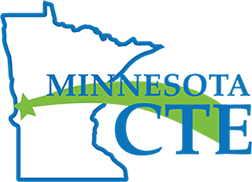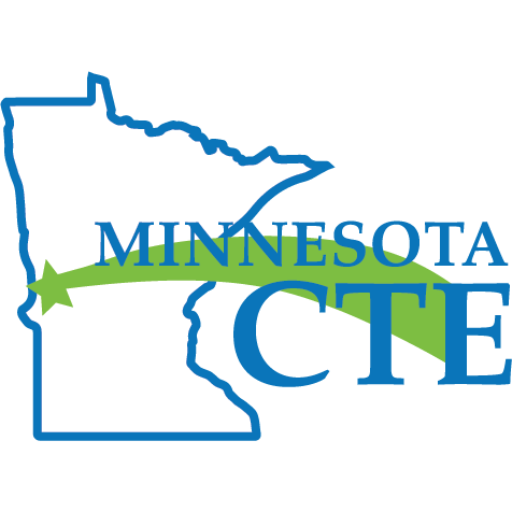What is Career and Technical Education (CTE)?
Since 1917 with the passage of the Smith-Hughes Act, federal and state legislation have provided leadership for the implementation and improvement of educational programs that prepare youth for careers and vocations, and advancing our economy and society.
Just as there are three domains of learning, the foundation of any successful CTE program is based on three inseparable, equal, and interdependent components: classroom instruction, work-based learning, and social-emotional learning/leadership.

Academic Classroom & Laboratory
Cognitive Knowledge
Rigorous Instruction
Career and Technical Education (CTE) prepares students for high wage, high skill, and in demand jobs and careers. CTE integrates science, math, economics, and art graduation credit, while earning college credits and industry certifications. CTE students in Minnesota are significantly more likely to graduate from high school than their non-CTE peers.
CTE includes courses in agriculture, business and marketing, family and consumer sciences, health science, and trade and industry.

Technical Work-Based Learning
Psychomotor Skills
Relevant Experience
Students learn best by doing. A work-based learning (WBL) project is an extension of the classroom, where students develop specific technical and career knowledge that prepares them for their future.
A WBL experience is different than academic instruction and is often more relevant. WBL includes internships, entrepreneurship, research, service learning, apprenticeship, and school-based enterprises. Many schools offer WBL courses, sometimes called On-the-Job Training (OJT).

CTSOs & Social-Emotional Learning
Affective Dispositions
Relationships & Leadership
Leadership is a skill and it can be taught. In CTE students learn and practice leadership and social-emotional learning in programs called CTE Student Organizations (CTSO).
CTSOs are not clubs. They are an intracurricular (i.e., within the curriculum) and integral (i.e., necessary, essential) part of the program. CTSOs develop relationship and career skills through leadership conferences and conventions, career development competitions, service, and more.

Career Fields
Minnesota CTE leadership has defined 16 career clusters, each composed of several career pathways, organized within six career fields. See Minnesota’s Career Wheel below.
Generally, these career fields align with Minnesota’s Career and Technical Education (CTE) licenses. The agriculture, business, and family and consumer sciences licenses are broad-based licenses including all pathways within their licensure fields. Each of the careers licenses is specific to a pathway or cluster of pathways; career-specific licenses must also complete the CTE Core Skills requirements to address the philosophy and program management aspects of CTE, which are embedded in the broad-based licenses. The Arts, Communications, and Information Technology Field is generally within the Trade & Industry licenses.
It is important to note that there is overlap between many of the licenses and career fields, depending on the skill being taught and the context of the career. For example: graphic design careers exist in both business and marketing, as well as trade and industry fields; hospitality is in both business and family & consumer science; veterinary medicine is both an agricultural career and a health science career; welding exists in both industrial and agricultural careers.
- Agriculture, Food, & Natural Resources (AFNR): agriculture-licensure code 010100,
- Business & Marketing (B&M): business-140050,
- Family & Consumer Sciences (FCS), including Human Services: family and consumer sciences-090100, cosmetology-092602, law enforcement-092603, creative design-300400, early childhood careers-300500, and hospitality careers-300600,
- Health Science Education (HSE): medical careers-300300, and
- Trade & Industry (T&I): construction careers-300100, manufacturing careers-300200, transportation careers-300700, and communication technology careers-300000. Note: the technology-100100 license is not a CTE license in Minnesota. There is no license known as “technology education” in Minnesota.
- Work-Based Learning (WBL) and Social-Emotional Learning (SEL)/Leadership are not full licensure areas, rather they are “center of the wheel” essential elements of a CTE program. Minnesota has a WBL endorsement-160000 that can be applied to a CTE license.



